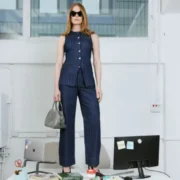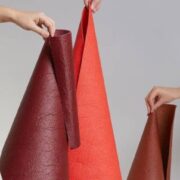By Agbaje Ahmad-Tijani
Often time when minimalism is mentioned or brought up, what comes to mind is an austere, bare, almost frugal aesthetic; a room with just one bed, a single pillow, a closet with seven outfits-one for each day of the week – (all the same black shirt and dark wash jeans), white walls and black furniture and no decoration or personality.
That is an extreme version of the phenomenon, and while that image is reflection of what minimalism could look like, there is a lot more to minimalism than how things look.
Let’s start at the basics; what does it mean to be minimal?
The word comes from the Latin word minimum which means smallest thing, it means of a minimum amount, quantity or degree.
Minimal also means the smallest amount probable, the least possible amount required, recorded or reasonable.
Basically, to be minimal is to be all about the essentials; every other thing fades to the background, it is identifying the things that are the most important, and then eliminating everything else so you can properly appreciate the things that mean the most to you.
Minimalism is more of a mindset than just an aesthetic.
It urges us to ask the question; what is important?
Why should I be a minimalist?
According to the award-winning duo the minimalists, “Minimalism is a tool to rid yourself of life’s excess in favor of focusing on what’s important—so you can find happiness, fulfillment, and freedom.”
At its core, being a minimalist means investing your time in the important things in life.
With less clutter taking up space in your mind, a great diet and mindset for accomplishment, your brain can perform at a higher level.
Now more then ever, there’s an abundance of things. You could own three cars, have seven of the exact same dinner plates, have a Netflix, Disney plus, and a Hulu subscription.
Why? Because we can.
There is something almost primally satisfying about the acquisition of more.
More gadgets, more clothes, more money, more, more, more.
People, more than ever, are obsessed with multiples; having five pairs of very similar looking jeans, having ten cars, having multiple sneakers.
As we all know, too much of something is bad, and this saying is especially true at this point in time.
If there is an excess of something, it makes it significantly more difficult to actually appreciate the worth of those things; when you have three iPhones, it’s hard to value one of them, because you have more than one, so you automatically place less value for your money in them.
Thereby reducing the fulfillment and happiness you’d be getting from that thing, if you really did care about it.
At the end of the day, minimalism is about being more intentional about the things in your life so you can appreciate them to their fullest extent.
Another big problem with this new culture of more, is how extremely damaging to the planet it is.
Sustainability has reached the mainstream media in the last two decades, and now we hear about it all the time, with brands touting their sustainable packaging and practices, as a way to convince buyers that its okay to have more things, because its not harming the earth, well not really.
Even something as seemingly innocuous as not finishing what’s on your plate can have devastating repercussions on the environment. Every year, global food waste amounts to about 1.3 billion tons, and that’s such a big number that it’s impossible to imagine. It’s costing us about $750 billion annually, and the environmental waste is just as staggering.
Meanwhile, about 870 million people are starving.
The minimal solution to this is to eat in small portions, then if you decide you want more, you can go and get another portion, instead of heaping your plate full and wasting food.
That’s to talk less of clothes. In a time where fashion is more mainstream and accessible than ever, fast fashion is thriving on this culture of more; targeting the people who don’t have enough money to buy the more high-end designer creations, but still want to be part of trends and fads.
The fashion industry is the second-largest consumer of water. From growing organic fibers to processing synthetic fibers, for dyeing or even for finishing, each stage consumes a lot of water. Each year around 7 trillion liters of water is being consumed by the fashion industry alone. That is a staggering amount of resource to use.
“It takes 2700 liters of water to make 1 cotton t-shirt which is sufficient for a person to drink for 2.5 years”
The fashion industry obviously uses land to grow the materials it needs, i.e., cotton. If it’s wool then the land is used for pasture for sheep and goats. Also, setting up of industries and stores too require land resources. Not only this, overgrazing of pastures and usage of chemicals to grow cotton have been degrading the quality of the soil in these lands.
The land which could have been used for settlement areas, housing or even food farming or production is now used as a source of fiber for cheap quality, trendy, clothes.
The minimal solution to this is – you guessed it – thrifting. Buying used clothes has become more main stream over the past few years partly because more vintage trends are coming in and also because of the sustainability of the practice.
So, before you go into that store to buy a new dress or shirt for that one event (and never wear it again) think about how much waste you’re contributing to the environment.
There’s a bunch of little, easy, ways you can incorporate minimalism into your life and daily routine, you don’t have to paint your walls white and throw away all your plushies, you just have to make small, intentional choices that allow you to feel better and live better.
Being minimal can help you achieve a healthier, more fulfilling, and more sustainable lifestyle.
You just have to ask yourself the question; what is important?






